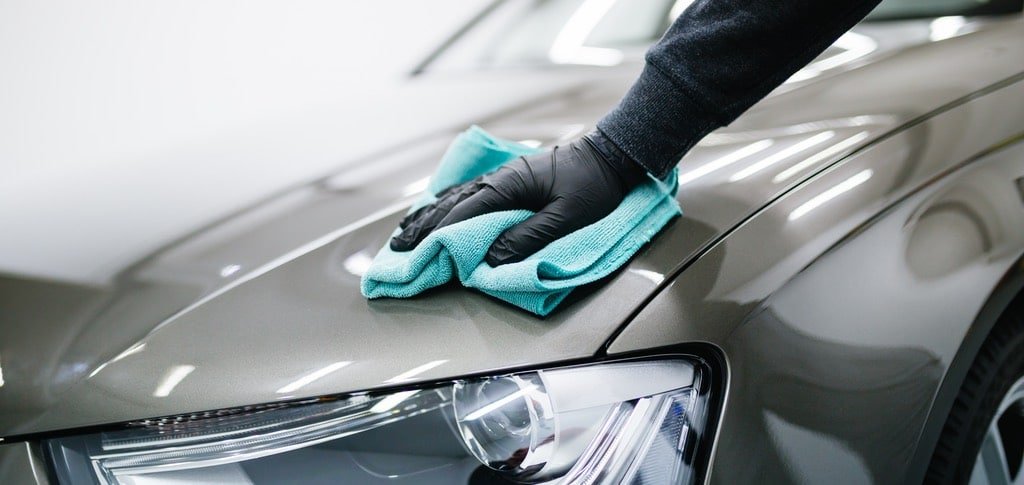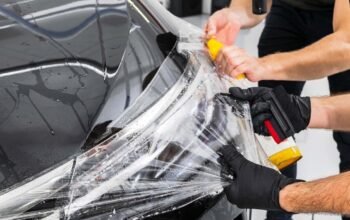Detailing involves a thorough and meticulous cleaning, restoration, and finishing process applied to various items, often to achieve a pristine condition. Unlike a regular cleaning job, detailing goes beyond the surface to address every intricate part of the item. In automotive contexts, detailing is crucial for maintaining a car’s appearance and value, addressing everything from the exterior paint to the interior upholstery. For homes, detailing ensures that every nook and cranny is clean and organized, improving both the look and functionality of the space. Product detailing focuses on presenting clear and precise information about items, ensuring that customers get accurate descriptions and understand what they are purchasing. Detailing, therefore, plays a vital role in maintaining and enhancing the quality and appeal of vehicles, homes, and products.
Types of Detailing
Car Detailing: More Than Just a Wash
Car detailing is a comprehensive process designed to maintain and improve the appearance of a vehicle. Unlike a basic car wash, detailing includes both exterior and interior work. Exterior detailing involves washing the car with specialized products, followed by polishing to remove imperfections and waxing to protect the paint. This process not only enhances the car’s shine but also helps preserve its value. Interior detailing, on the other hand, focuses on cleaning and rejuvenating the inside of the car. This includes vacuuming carpets, cleaning seats and dashboards, and treating leather or fabric surfaces. Detailing also involves addressing small details like cleaning vents and trim. The goal is to make the car look and feel like new, offering both aesthetic appeal and comfort.
Home Detailing: Cleaning and Organizing Tips
Home detailing takes cleaning and organization to the next level. It involves a systematic approach to deep cleaning every area of the house and ensuring that everything is in its proper place. This includes decluttering rooms, thoroughly cleaning surfaces, and organizing belongings. Techniques such as dusting, vacuuming, and scrubbing are employed to eliminate dirt and grime. Additionally, home detailing often includes specialized tasks like cleaning carpets, washing windows, and treating upholstery. The goal is to create a fresh, inviting, and orderly environment. By following a detailed cleaning schedule and using the right tools and products, homeowners can maintain a high standard of cleanliness and organization, enhancing both the look and functionality of their living spaces.
Product Detailing: Ensuring Quality and Accuracy
Product detailing involves providing accurate and detailed descriptions of products to help consumers make informed purchasing decisions. This includes highlighting key features, specifications, and benefits in a clear and concise manner. Effective product detailing ensures that all relevant information is presented, reducing the chances of misunderstandings or dissatisfaction. This process involves creating high-quality images, writing compelling descriptions, and providing any additional details that may be important to the customer. Accurate product information helps build trust with potential buyers and can lead to increased sales and customer satisfaction. It is essential for e-commerce platforms, product catalogs, and marketing materials to ensure that customers have a complete understanding of what they are buying.
Essential Tools and Supplies for Detailing
Basic Tools for Car Detailing
Car detailing requires a range of specialized tools to achieve the best results. Essential tools for exterior detailing include high-quality car wash soap, microfiber wash mitts, clay bars, polishers, and wax. A pressure washer can also be useful for removing stubborn dirt. For interior detailing, vacuum cleaners with attachments for different surfaces are crucial, along with upholstery cleaners, leather conditioners, and detail brushes. Each tool plays a specific role in ensuring that every part of the car is cleaned and treated properly. Investing in high-quality tools can make the detailing process more efficient and effective, resulting in a better finish and longer-lasting results.
Must-Have Supplies for Home Detailing
Home detailing requires a variety of cleaning supplies to tackle different tasks effectively. Basic supplies include all-purpose cleaners, glass cleaners, microfiber cloths, and mop systems. For more specific tasks, you might need carpet cleaners, upholstery sprays, and furniture polish. Organizing supplies in a convenient way can make the detailing process smoother and more efficient. Additionally, having cleaning tools like brushes, scrub pads, and dusters on hand will help address various surfaces and hard-to-reach areas. Regular maintenance of these supplies is also important to ensure they perform well and help achieve a thorough cleaning and organizing process.
Key Items for Effective Product Detailing
Effective product detailing involves several key items to ensure clarity and accuracy. High-resolution images are crucial for showcasing the product’s features and quality. Descriptive text should include specifications, benefits, and usage instructions. It’s also helpful to include customer reviews and ratings to provide social proof. Consistency in presentation across different platforms (e.g., online stores, catalogs) is important to avoid confusion and build trust. Ensuring that all product information is up-to-date and accurate helps customers make informed decisions and enhances their overall shopping experience.
Step-by-Step Guide to Car Detailing
Preparation: Cleaning and Inspection
The first step in car detailing is preparation. Begin by thoroughly cleaning the car to remove loose dirt and debris. This initial wash should be done using a high-quality car soap and a microfiber wash mitt to prevent scratching. After the car is clean, inspect it for any areas that need special attention, such as scratches or stains. This inspection helps in planning the detailing process, ensuring that each issue is addressed appropriately. Preparation also involves gathering all necessary tools and supplies, organizing them for easy access during the detailing process. Proper preparation sets the stage for a successful and efficient detailing job.
Exterior Detailing: Washing, Polishing, and Waxing
Exterior detailing is a multi-step process that enhances the car’s appearance and protects its paint. Start by washing the car with a pH-balanced car shampoo to remove dirt and grime. After washing, use a clay bar to remove any embedded contaminants from the surface. Next, apply a polish to correct any paint imperfections and bring out the car’s shine. Finally, apply a layer of wax to protect the paint and add a glossy finish. Waxing not only improves the car’s appearance but also provides a protective barrier against environmental damage. Regular exterior detailing helps maintain the car’s value and keeps it looking new.
Interior Detailing: Vacuuming, Upholstery Cleaning, and Dashboard Care
Interior detailing focuses on cleaning and restoring the car’s interior. Begin by vacuuming the carpets, seats, and floor mats to remove dirt and debris. Use upholstery cleaners for fabric seats and leather conditioners for leather surfaces to clean and maintain their appearance. Pay attention to details such as cleaning vents, buttons, and other hard-to-reach areas. Dashboard care includes wiping down surfaces with appropriate cleaners and protectants. Interior detailing helps improve the car’s comfort and aesthetics, making the driving experience more pleasant. Regular interior maintenance also contributes to the vehicle’s overall cleanliness and longevity.
Tips and Tricks for Effective Home Detailing
Decluttering Strategies
Decluttering is a key component of home detailing. Start by evaluating each room and deciding what items are necessary and what can be discarded or donated. Implement organizational systems such as storage bins, shelves, and drawer organizers to keep items in their designated places. Regularly reviewing and purging unnecessary items helps maintain a clutter-free environment. Consider using a step-by-step approach, tackling one room or area at a time to avoid feeling overwhelmed. Decluttering not only improves the visual appeal of your home but also enhances functionality and makes cleaning easier.
Cleaning Techniques for Different Surfaces
Different surfaces require specific cleaning techniques to achieve the best results. For hard surfaces like countertops and tiles, use appropriate cleaners and scrubbing tools to remove stains and grime. Wooden surfaces should be cleaned with products designed for wood to prevent damage. Carpets and upholstery require vacuuming and, in some cases, steam cleaning or spot treatments. For glass surfaces, a streak-free glass cleaner is essential for a clear finish. Adapting cleaning techniques to the surface type ensures that each area is cleaned effectively without causing damage.
Maintaining a Fresh and Organized Home
Maintaining a fresh and organized home involves regular upkeep and strategic planning. Develop a cleaning schedule that includes daily, weekly, and monthly tasks to keep your home in top condition. Implement habits such as tidying up before bed and addressing spills or messes immediately. Use air purifiers and regular ventilation to maintain good air quality. Organize belongings in a way that makes them easy to access and put away. Consistent maintenance and organization contribute to a pleasant living environment and help prevent large-scale cleaning tasks.
Understanding Product Detailing
Importance of Accurate Product Information
Accurate product information is crucial for customer satisfaction and trust. Clear and detailed descriptions help consumers understand what they are buying, reducing the likelihood of returns or complaints. Accurate information includes specifications, dimensions, materials, and any other relevant details. Providing complete and honest information helps customers make informed decisions and enhances the credibility of the product and the retailer. Inaccurate or misleading information can lead to dissatisfaction and damage the reputation of the business.
How to Write Clear and Comprehensive Product Descriptions
Writing clear and comprehensive product descriptions involves highlighting key features and benefits in a way that is easy for customers to understand. Start with a concise overview of the product, followed by detailed information about its features and uses. Use simple language and avoid jargon to ensure that the description is accessible to a broad audience. Including customer reviews and testimonials can provide additional insights and build trust. A well-written product description helps attract potential buyers and encourages them to make a purchase.
Ensuring Consistency and Quality in Product Detailing
Consistency and quality in product detailing are essential for creating a professional and reliable image. Ensure that product information is uniform across all platforms, including online stores, catalogs, and marketing materials. Regularly review and update product details to reflect any changes or new information. High-quality images and accurate descriptions contribute to a positive customer experience. Consistent and high-quality product detailing helps build trust with customers and enhances the overall shopping experience.
Common Mistakes to Avoid in Detailing
Mistakes in Car Detailing
Common mistakes in car detailing include using incorrect cleaning products or tools that can damage the car’s surfaces. For example, using household cleaners on car paint can cause scratches or discoloration. Skipping essential steps, like clay bar treatment before polishing, can result in less effective results. Additionally, not allowing products to properly cure or dry can affect the final finish. It’s important to follow detailed procedures and use the right products to achieve the best results and avoid damaging the vehicle.
Pitfalls in Home Cleaning
Pitfalls in home cleaning often involve using the wrong cleaning products or techniques. For example, using abrasive cleaners on delicate surfaces can cause scratches or damage. Overlooking high-touch areas, such as doorknobs and light switches, can result in incomplete cleaning. Additionally, neglecting regular maintenance tasks can lead to a buildup of dirt and grime. Avoiding these common mistakes ensures a thorough and effective cleaning process, maintaining a fresh and inviting home environment.
Errors in Product Information
Errors in product information can lead to customer dissatisfaction and mistrust. Common mistakes include providing incorrect specifications, missing important details, or using outdated information. Inconsistent information across different platforms can also confuse customers. To avoid these errors, regularly review and update product information, ensuring that all details are accurate and up-to-date. Clear and consistent product descriptions help build credibility and improve the customer experience.
Conclusion
Effective detailing, whether for cars, homes, or products, requires attention to detail and the right techniques. By understanding the various types of detailing and using appropriate tools and supplies, you can achieve a high-quality finish that enhances the appearance and functionality of the item. Avoiding common mistakes and adhering to best practices ensures that the detailing process is efficient and effective. The benefits of meticulous detailing include improved aesthetics, increased value, and enhanced user experience, making it a worthwhile investment in maintaining and presenting your possessions.




